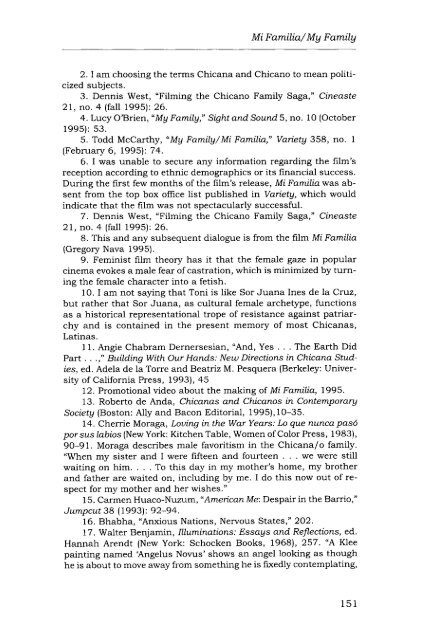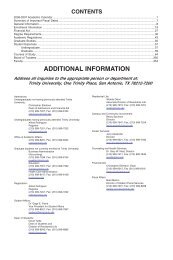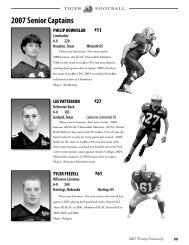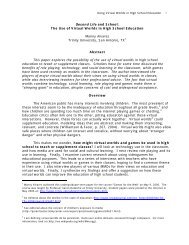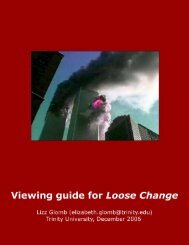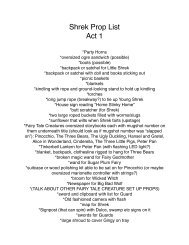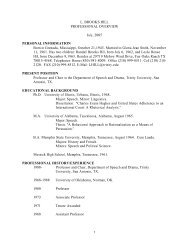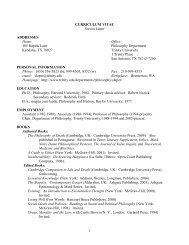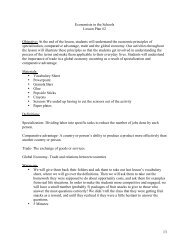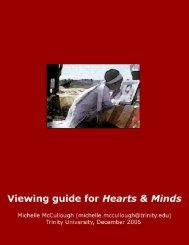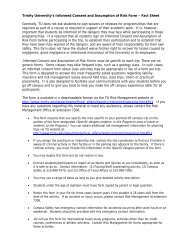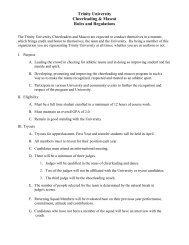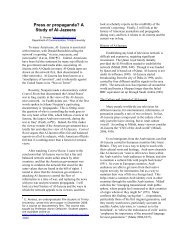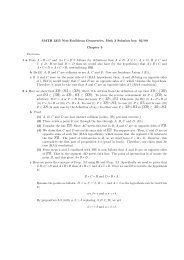Reviews - Trinity University
Reviews - Trinity University
Reviews - Trinity University
Create successful ePaper yourself
Turn your PDF publications into a flip-book with our unique Google optimized e-Paper software.
Mi Familia/My Family<br />
2. I am choosing the terms Chicana and Chicano to mean politicized<br />
subjects.<br />
3. Dennis West, “Filming the Chicano Family Saga,” Cineaste<br />
21, no. 4 (fall 1995): 26.<br />
4. Lucy O’Brien, “My Family,” Sight and Sound 5, no. 10 (October<br />
1995): 53.<br />
5. Todd McCarthy, “My Family/Mi Familia,” Variety 358, no. 1<br />
(February 6, 1995): 74.<br />
6. I was unable to secure any information regarding the film’s<br />
reception according to ethnic demographics or its financial success.<br />
During the first few months of the film’s release, Mi Familia was absent<br />
from the top box office list published in Variety, which would<br />
indicate that the film was not spectacularly successful.<br />
7. Dennis West, “Filming the Chicano Family Saga,” Cineaste<br />
21, no. 4 (fall 1995): 26.<br />
8. This and any subsequent dialogue is from the film Mi Familia<br />
(Gregory Nava 1995).<br />
9. Feminist film theory has it that the female gaze in popular<br />
cinema evokes a male fear of castration, which is minimized by turning<br />
the female character into a fetish.<br />
10. I am not saying that Toni is like Sor Juana Ines de la Cruz,<br />
but rather that Sor Juana, as cultural female archetype, functions<br />
as a historical representational trope of resistance against patriarchy<br />
and is contained in the present memory of most Chicanas,<br />
Latinas.<br />
11. Angie Chabram Dernersesian, “And, Yes . . . The Earth Did<br />
Part . . . ,” Building With Our Hands: New Directions in Chicana Studies,<br />
ed. Adela de la Torre and Beatriz M. Pesquera (Berkeley: <strong>University</strong><br />
of California Press, 1993), 45<br />
12. Promotional video about the making of Mi Familia, 1995.<br />
13. Roberto de Anda, Chicanas and Chicanos in Contemporary<br />
Society (Boston: Ally and Bacon Editorial, 1995), 10-35.<br />
14. Cherrie Moraga, Loving in the War Years: Lo que nunca paso<br />
porsus labios (New York: Kitchen Table, Women of Color Press, 1983),<br />
90-9 1. Moraga describes male favoritism in the Chicana/o family.<br />
“When my sister and I were fifteen and fourteen . . . we were still<br />
waiting on him. . . . To this day in my mother’s home, my brother<br />
and father are waited on, including by me. I do this now out of respect<br />
for my mother and her wishes.”<br />
15. Carmen Huaco-Nuzum, “American Me: Despair in the Barrio,”<br />
Jumpcut 38 (1993): 92-94.<br />
16. Bhabha, “Anxious Nations, Nervous States,” 202.<br />
17. Walter Benjamin, Illuminations: Essays and Reflections, ed.<br />
Hannah Arendt (New York: Schocken Books, 1968), 257. “A Klee<br />
painting named ‘Angelus Novus’ shows an angel looking as though<br />
he is about to move away from something he is furedly contemplating,<br />
151


